All publications

Journal der Künste 8
Special Edition: The Archives
English
available free of charge
ISSN 2510-5221
For many an archive is an unknown, if not enigmatic place. Frequently used metaphors, such as treasure trove, labyrinth or cultural memory, underscore this emphasis. A special issue of the Journal der Künste is dedictated to the Archives at the Akademie der Künste. Members, researchers and staff tell stories about documents and pieces in the collections in an attempt to make archival work more transparent. The overlying questions are: What is preserved in an archive? And how do these surviving objects shape our perception of what remains of their makers?
To order the print edition: info@adk.de

Stephanie Kiwitt
Máj / My
Akademie der Künste, Berlin, Camera Austria, Graz (eds.)
Spector Books, Leipzig, 2018
Czech / English
132 pp., 87 ill.
ISBN 978-3-95905-239-9
€ 28
In 1996 the British supermarket chain Tesco took over "Máj", an old-fashioned department store in Prague. In 2009 it was renamed "My". Although both words are pronounced the same, the new name nevertheless opened another field of association. In English "my" refers to an individual; in Czech it means "we". Starting out from this semantic differentiation, Stephanie Kiwitt (Ellen Auerbach Fellow 2016), set off on a photographic search for clues in the streets of Prague.

Michael Ruetz
Pogrom 1938
Das Gesicht in der Menge
Akademie der Künste, Berlin, Nimbus, Wädenswil 2018
German
156 pp., 125 ill.
ISBN 978-3-03850-050-6
Best.-Nr. 7016
€ 29,80
Relying on materials from international archives, the author documents what "normal" citizens actually did, endorsed and saw. The images and eyewitness accounts reveal far-reaching complicity among perpetrators and followers: here the destructive rage and triumphant jeers of an unbridled mob; there the cowardly curiosity of onlookers. This publication unmistakably shows how 9 November 1938 became the testing ground and starting point of the Holocaust – right before everyone's eyes.
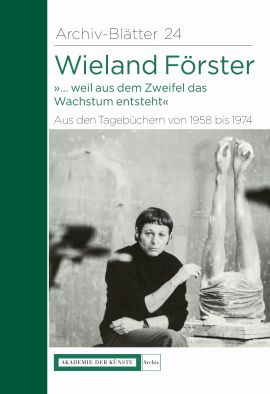
Archiv-Blätter 24
Wieland Förster "... weil aus dem Zweifel das Wachstum entsteht"
Aus den Tagebüchern von 1958 bis 1974
Eva Förster on behalf of the Akademie der Künste (ed.)
Akademie der Künste, Berlin 2018
German, 128 pp.,
20 ill.
ISBN 978-3-88331-227-9
Best.-Nr. 1181
€ 12
Excerpts from the unpublished diaries illuminate the artistic selfunderstanding and personal thoughts of the young Wieland Förster from his time as a master student to membership at the Deutsche Akademie der Künste (GDR). A document on walking with one's head held high in difficult times. The excerpts are supplemented by an interview with the artist, an essay by Hannes Schwenger and a contribution from Michael Krejsa on the Wieland Förster Archive.
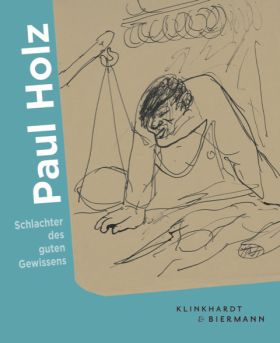
Nina Schleif
Schlachter des guten Gewissens.
Der Zeichner Paul Holz 1883–1938
Kunstforum Ostdeutsche Galerie Regensburg (ed.)
Klinkhardt & Biermann, Munich, 2018
German
176 pp., 164 ills.
ISBN 978-394361-6-53-8
€ 34,95
Paul Holz (1883–1938) was one of the most exceptional German illustrators of the 20th century. Nevertheless, he was denounced as "degenerate" after 1933 and has only gained increasing appreciation since 1990. To commemorate of the 80th anniversary of his death, the catalogue presents all works in the possession of Kunstforum Ostdeutsche Galerie in Regensburg, as well as outstanding drawings from the Akademie der Künste, whose art collection is home to the most extensive collection of works by Paul Holz.

Archive zur Musik des 20. und 21. Jahrhunderts
Band 15
Eduard Erdmann
Werner Grünzweig and Gerhard Gensch on behalf of the Archives of the Akademie der Künste (eds.)
Akademie der Künste, Berlin / von Bockel Verlag, Neumünster, 2018
German
212 pp., 47 b/w ill.
ISBN 978-3-95675-024-3
Best.-Nr. 3041
€ 24,90
At the start of the 1920s, Eduard Erdmann (1896–1958) made a name for himself as a pianist and composer. The present volume is dedicated to his compositional oeuvre, his personality and his contacts to artists in Berlin in the 1920s, such as Ernst Krenek and Hans Jürgen von der Wense. An edition on his correspondence with Artur Schnabel and essays about Erdmann's ties to Riga complete this overview of the artist.

Adrian Piper
Käthe-Kollwitz-Preis 2018
Akademie der Künste, Berlin 2018,
German
48 pp., 21 ill.
ISBN 978-3-88331-230-9
Best.-Nr. 9033
€ 10
In his essay Structures of Response, Austrian art historian Helmut Draxler examines Adrian Piper's transformation of Minimalism. Her artistic approach has become internationally known through works that critically examine social identities and their representation in media images.
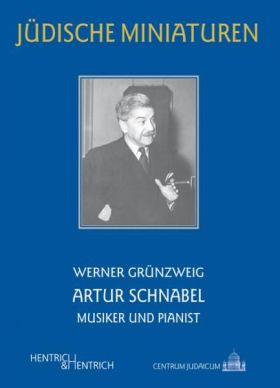
Werner Grünzweig
Artur Schnabel. Musician and Pianist
Hentrich & Hentrich, Berlin 2017 (Jewish Miniatures, vol. 205a)
English
76 pp., 14 ill.
ISBN 978-3-95565-288-3
€ 8,90
Werner Grünzweig, who has published numerous books about Artur Schnabel (1882–1951), presents the first biography of Schnabel in German with this volume. It honours Schnabel as a performer, composer and theorist. His concert activity, records, publications and lectures have changed our concert life up to the present day.

Journal der Künste 7
Published four times a year(German/English),
available free of charge
ISSN (Print) 2510-5221
The Journal der Künste 7 with contributions of: Moshe Zimmermann, Micha Ullman and Matthias Flügge, Francis Kéré, Mathias Greffrath, Kathrin Röggla, Michael Ruetz, Christian Bommarius, László F. Földényi, Karin Sander, Eran Schaerf, Helmut Draxler, Christina Weiss, and much more.
To order the print edition: info@adk.de

GDR Posters
Calendar 2019
Akademie der Künste / KV&H Verlag, Weingarten, 2018
Wall calendar
German
Best.-Nr. 1186
out of print
Winter Service, "Haferkakao" (oat cocoa), Baltic Sea Week and Tanning Cream! In the 1950s, design and advertising content were as varied as the product range of the planned economy was manageable. Twelve more motifs from the poster collection of the Akademie der Künste with short texts by Matthias Biskupek offer insights into the world of GDR advertising graphics.
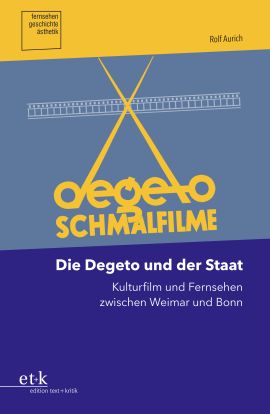
Rolf Aurich
Die Degeto und der Staat.
Kulturfilm und Fernsehen zwischen Weimar und Bonn
Series "Fernsehen. Geschichte. Ästhetik" [Television. History. Esthetics], Vol. 1, Akademie der Künste, Deutsche Kinemathek – Museum für Film und Fernsehen (eds.)
edition text + kritik, Munich 2016
German, 252 pp., 18 ill.
ISBN 978-3-86916-605-6
€ 29
The "Deutsche Gesellschaft für Ton und Bild" (Degeto) was founded in 1929 to promote cultural films. The character of Degeto changed profoundly at the end of the 1950s when the ARD turned it into a central instrument of film acquisition for its television programming. Rolf Aurich, author and editor at the Filmmuseum Berlin, reviews the first three decades of Degeto's history.
Carsten Krohn
Hans Scharoun. Buildings and Projects
Birkhäuser in cooperation with the Akademie der Künste, Berlin
Basel, 2018
208 pp., 350 ill.
English edition 978-3-0356-0691-1
€ 59,95
The book is the first to document in text and image all the well-known buildings designed by Hans Scharoun, including his early work in East Prussia. Photographs specially taken by Carsten Krohn, historical photographs and plans from the Hans-Scharoun-Archiv at the Akademie provide a new perspective on this expressive, organic architecture.

JUNGE AKADEMIE
Dokumentation 2017
Akademie der Künste, Berlin, 2018
German, 128 pp., 222 ill.
ISBN 978-3-88331-228-6
Best.-Nr. 1182
€ 6
This richly illustrated publication presents the special events of the JUNGE AKADEMIE in 2017, including many encounters with Akademie members and new partners. Under the rubric "RetroProSpekt MODERNE", Akademie fellows examined Modernism less as a style fixed in time than as an artistic position. They raised questions about what remains unfulfilled in Modernism, about sustainability and necessary reforms.

Dénes Krusovszky
Benjamin Stölzel
Poems
Sculptures
Akademie der Künste, Berlin, 2018
German/English/Hungarian
48 pp., 30 ill.
ISBN 978-3-88331-229-3
Best.-Nr. 7015
€ 10
As part of the Berlin Fellowship awarded by the Akademie der Künste in Berlin, Dénes Krusovszky (Literature Fellow) and Benjamin Stölzel (Visual Arts Fellow) got to know each other in spring 2017. The poems in this book by Dénes Krusovszky were written as a reaction to selected sculptures by Benjamin Stölzel.
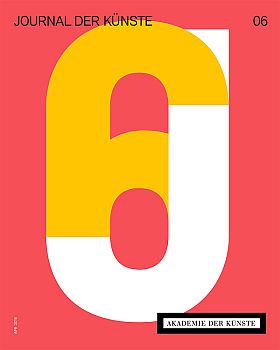
Journal der Künste 6
Published four times a year(German/English)
available free of charge
ISSN (Print) 2510-5221
Journal der Künste 6 offers several artists' contributions: a photo series on Silvia Bovenschen; a carte blanche by Monika Rinck; the continuation of the experimental dialogue between Kathrin Röggla and Manos Tsangaris; a story about someone who fled from Syria by Senthuran Varatharajah; a stay in Berlin by Fiston Mwanza Mujila; acoustic poetry, intuitive culture of listening and a contribution on Heinrich Mann and the Akademie from the archive, and much more.
To order the print edition: info@adk.de

Martin Rupprecht
BühnenBilder
Werner Heegewaldt and Peter W. Marx on behalf of the Akademie der Künste, Berlin, and the Theaterwissenschaftliche Sammlung of the Universität zu Köln (eds.)
Theater der Zeit, Berlin 2018
240 pp., over 400 ill.
ISBN 978-3-95749-139-8
Best.-Nr. 5049
€ 25
An extensively illustrated book is published about the set and costume designer Martin Rupprecht's life's work for the stage, which also includes his freelance artwork for the first time. Essays by scholars and Rupprecht's companions reflect his oeuvre and its developments.
Texts by Martin Rupprecht, Julia Burde, Stephan Dörschel, Michael Hampe, Volker Hassemer, Werner Heegewaldt, Nele Hertling, Gerald Köhler, Peter W. Marx, Sabine Sterken, Christoph Tannert, Matthias Zwarg.

Kinder im Exil / Children in Exile
Gesine Bey on behalf of the Akademie der Künste, Berlin, 2018
German/English
48 pp., 44 ill.
€ 2
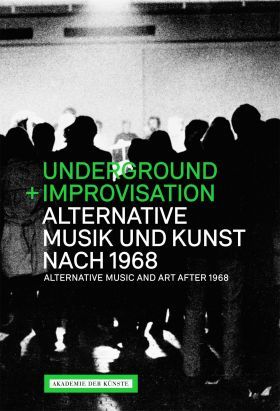
Underground + Improvisation
Alternative Music and Art after 1968.
Akademie der Künste, Berlin 2018
German/English
132 pp., 53 ill.
ISBN 978-3-88331-226-2
Best.-Nr. 7013
out of print
The Reader for this season's main topic at the Akademie compiles text essays by curators and protagonists, who introduce the artistic developments of the West Berlin music label FMP and its unique concert events as a dynamic art and music scene in Eastern Europe after 1968, and as an expression of a multifaceted counterculture in Poland, the GDR, Czechoslovakia, the Soviet Union and Hungary.

Journal der Künste 5
Published four times a year(German/English),
available free of charge
ISSN (Print) 2510-5221
Journal der Künste 5 will be available in German and English now, providing an overview of the focus of the future programme and information about new acquisitions and finds from the Akademie's archives. With contributions on the Underground and Improvisation and Abfallprodukte der Liebe projects or the Wo kommen wir hin interdisciplinary research project, as well as the lecture My Inner Europe (Cette Europe qui est en moi) by Alain Mabanckou, and the lecture on the Valeska Gert Visiting Professorship by Lia Rodrigues, and much more.
To order the print edition: info@adk.de